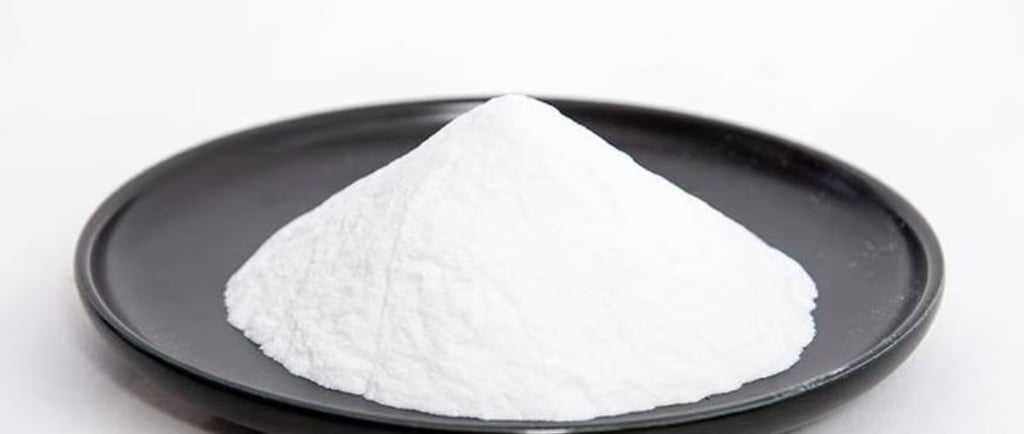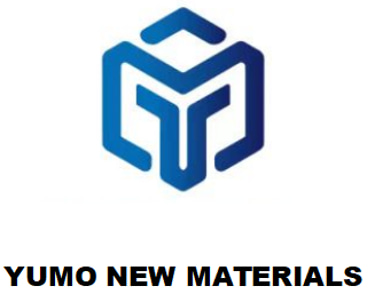HENAN YUMO: Engineered Precision, Uncompromised Performance
What is Aluminum Oxide Powder Used For?
Aluminum oxide powder, also known as alumina (chemical formula Al₂O₃), is one of the most widely used and versatile industrial materials in the world. From high-performance ceramics to abrasive blasting, from semiconductor polishing to orthopedic implants, aluminum oxide plays a critical role in various industries thanks to its exceptional hardness, thermal stability, chemical resistance, and electrical insulating properties.
8/6/20256 min read


What is Aluminum Oxide Powder Used For?
Aluminum oxide powder, also known as alumina (chemical formula Al₂O₃), is one of the most widely used and versatile industrial materials in the world. From high-performance ceramics to abrasive blasting, from semiconductor polishing to orthopedic implants, aluminum oxide plays a critical role in various industries thanks to its exceptional hardness, thermal stability, chemical resistance, and electrical insulating properties.
In this comprehensive guide, we will explore the many applications of aluminum oxide powder, analyze why it is so effective, and explain how different industries rely on this remarkable material for both basic and high-tech operations.
1. Introduction to Aluminum Oxide Powder
Aluminum oxide is a naturally occurring compound found in bauxite ore. It is typically refined through the Bayer process and is available in several grades and forms, including white fused alumina, brown fused alumina, calcined alumina, and activated alumina. When processed into fine powder, it exhibits outstanding physical and chemical characteristics that make it suitable for a wide range of industrial and scientific applications.
The characteristics that make aluminum oxide powder especially valuable include:
High hardness (9 on the Mohs scale)
Excellent thermal and chemical stability
Electrical insulation properties
High melting point (over 2000°C)
Corrosion and wear resistance
Compatibility with other industrial materials
These features contribute to its widespread use in many demanding environments where reliability, durability, and performance are critical.
2. Use in Abrasives and Grinding
One of the most prominent uses of aluminum oxide powder is in abrasive products. Its extreme hardness makes it ideal for grinding, cutting, and polishing a wide range of materials. White fused alumina, in particular, is valued for its purity and sharp edges, making it suitable for precision grinding and polishing of metals, ceramics, and glass.
Abrasive applications include:
Sandpaper and sanding discs
Grinding wheels and cutting tools
Lapping and polishing compounds
Sandblasting media for surface preparation
Aluminum oxide abrasives are available in different grit sizes to suit various levels of material removal, from coarse grinding to fine finishing. Due to its high wear resistance and reusability, it is widely used in both manual and automated abrasive systems.
3. Role in Refractory Materials
Aluminum oxide powder is a key ingredient in refractory materials used in high-temperature applications such as furnaces, kilns, incinerators, and reactors. Its high melting point and resistance to thermal shock make it suitable for lining and insulating equipment exposed to extreme heat.
Common refractory applications include:
Firebricks and ceramic linings in steel and glass production
Castables and monolithics in foundries
Insulation panels for kilns and incinerators
Crucibles and labware used in metallurgy and material testing
White fused alumina is often chosen for high-purity refractory products, while brown fused alumina is preferred for general-purpose refractory bricks and castables.
4. Use in Ceramics and Electronic Components
Aluminum oxide powder is a major component in technical ceramics and electronic substrates. It provides mechanical strength, thermal conductivity, and electrical insulation—critical features for both structural and functional ceramic components.
Examples of ceramic applications include:
Alumina ceramic substrates for printed circuit boards (PCBs)
High-voltage insulators and spark plugs
Seals, bearings, and mechanical parts for wear resistance
Bioceramics for dental and orthopedic implants
Because of its stability and low dielectric loss, aluminum oxide is also essential in microwave and radio frequency (RF) systems, as well as in high-power electronic devices.
5. Applications in Surface Preparation and Coating
In surface finishing, aluminum oxide powder is used to prepare metal and plastic surfaces before painting, coating, or bonding. The abrasive nature of the powder ensures optimal surface texture and adhesion properties.
Applications in this area include:
Sandblasting for removing rust, paint, or scale
Micro-abrasion for delicate electronic parts
Surface roughening before adhesive bonding or coating
Satin finishing of metal surfaces for decorative purposes
The powder can be applied in dry or wet blasting systems and is often selected over silica due to its lower health risks and recyclability.
6. Use in Chemical Processing and Catalysis
Activated aluminum oxide powder plays an essential role in chemical processes as a catalyst support and adsorbent. Thanks to its high surface area and porous structure, it effectively removes impurities and supports chemical reactions in various industrial processes.
Some of its chemical applications include:
Catalyst carrier in petrochemical refining
Adsorbent in gas drying and purification
Desiccants in air and gas systems
Chromatography and filtration media in labs and factories
Alumina is particularly valuable in applications requiring high resistance to acids and alkalis, making it suitable for use in chemical reactors and processing equipment.
7. Role in Polishing and Lapping
Aluminum oxide powder is commonly used as a polishing compound in industries requiring fine surface finishing. Thanks to its consistent particle size and shape, it is ideal for creating mirror-like finishes on metals, semiconductors, optical components, and precious stones.
Key polishing applications include:
Wafer polishing in semiconductor manufacturing
Optical lens and mirror finishing
Jewelry and gemstone polishing
Automotive paint and plastic restoration
In these contexts, aluminum oxide powder ensures a controlled, uniform finish that enhances both appearance and functionality.
8. Applications in Metallurgy
In the metallurgical industry, aluminum oxide powder is used for refining metals, acting as a slag conditioner, and enhancing the properties of alloys. It also contributes to deoxidation and desulfurization in molten metal processing.
Common uses include:
Inclusion control in steelmaking
Flux additive in aluminum refining
Protective coating for electrodes and refractories
Alloying element in specialized metal formulations
Its high-temperature resistance and non-reactive nature help improve process efficiency and final product quality in metal production.
9. Use in Biomedical and Dental Fields
Aluminum oxide powder is biocompatible, making it suitable for use in various medical and dental applications. It is particularly useful for orthopedic implants and dental prosthetics due to its mechanical strength, wear resistance, and non-toxic nature.
Biomedical uses include:
Hip and knee joint implants
Dental crowns, bridges, and implants
Bone graft substitutes
Dental air abrasion tools
Its inert nature ensures that it does not trigger immune responses in the human body, making it a trusted material for long-term implantable devices.
10. Role in Environmental Technologies
Aluminum oxide powder is also employed in environmental applications such as air and water purification. Its ability to adsorb contaminants and withstand chemical exposure makes it an effective material for filtration and environmental cleanup technologies.
Examples include:
Fluoride and arsenic removal from drinking water
Desulfurization of natural gas and biogas
Wastewater treatment media
Emission control systems
Activated alumina, in particular, is a preferred material for its large surface area and capacity for adsorbing moisture and impurities.
11. Use in Glass and Optical Industries
Aluminum oxide is frequently used in the manufacture and finishing of glass products, where it enhances durability and clarity. It also plays a role in precision grinding and polishing of optical lenses and components.
Glass and optics applications include:
Glass polishing for LCD screens and mirrors
Scratch-resistant coatings
Lens shaping and finishing
Optical fiber processing
Its consistent abrasive quality and hardness allow for precise material removal without compromising the optical quality of the final product.
12. Role in Additive Manufacturing (3D Printing)
Aluminum oxide powder is gaining popularity in the field of additive manufacturing, particularly for creating high-performance ceramic parts using selective laser sintering (SLS) or stereolithography (SLA). It offers excellent heat resistance, mechanical strength, and surface finish for complex geometries.
Typical uses in 3D printing include:
High-temperature-resistant ceramic parts
Prototypes for aerospace and automotive industries
Medical device components
Functional ceramics for industrial use
As the technology continues to evolve, aluminum oxide is expected to become a standard material in high-precision 3D-printed components.
13. Safety and Handling Considerations
While aluminum oxide powder is generally considered safe and non-toxic, proper handling is essential to ensure safety, especially in powder form. Prolonged inhalation of fine particles can cause respiratory irritation. It is recommended to use:
Dust control systems during application
Personal protective equipment (PPE) such as masks and goggles
Proper ventilation in processing areas
Compliance with MSDS (Material Safety Data Sheet) guidelines
For food, medical, and pharmaceutical applications, only high-purity, FDA- or USP-grade aluminum oxide should be used to ensure compliance with health regulations.
14. Market Demand and Industrial Trends
The global demand for aluminum oxide powder continues to rise due to its applications in high-growth industries such as electronics, semiconductors, renewable energy, and advanced ceramics. Driven by trends like electric vehicles, clean energy, and miniaturization of devices, aluminum oxide's importance is expected to grow.
Some key trends include:
Increased use in battery separators and energy storage
Growth in 5G and semiconductor polishing
Rise of advanced ceramics in aerospace and defense
Expansion of water purification technologies in developing regions
As industries seek materials with durability, stability, and multifunctionality, aluminum oxide powder stands out as a reliable and efficient solution.
15. Conclusion
Aluminum oxide powder is more than just a raw material—it is a foundational element in countless industrial, technological, and scientific applications. Its exceptional combination of hardness, thermal resistance, and chemical stability allows it to serve a wide range of functions, from abrasive blasting to biomedical implants.
As global industries continue to advance and demand more precise, durable, and environmentally friendly materials, aluminum oxide powder will remain a crucial component in the innovation pipeline.
Whether in high-tech electronics, heavy manufacturing, or sustainable infrastructure, aluminum oxide’s versatility makes it one of the most valuable materials in the modern world.
